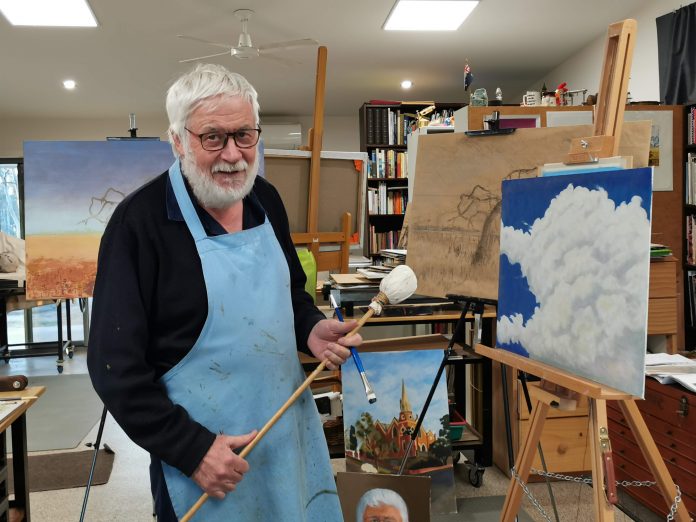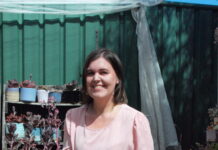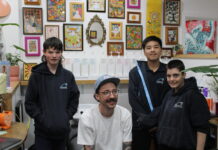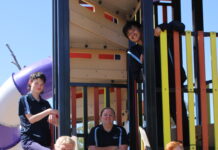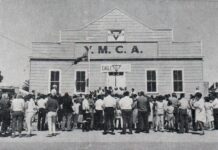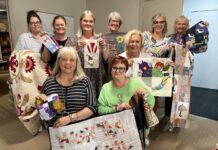Jim is a practicing artist in our community. You might remember him from the Dentistry in Parsonage Grove, which he managed for many years.
We asked him some questions and received very detailed responses.
He is full of knowledge and wisdom! Below are some of his sentiments about Art.
“In the nineties I discovered the work of the late Lance Mc Neill. Lance was my first teacher, and he taught a very disciplined approach to art which resonated with me.”

“I strongly believe that if you engage in an activity, whether it be work or play you should strive for excellence.”
“This opened up a whole new dimension to me in my interest and response to art. A fellow student of Lance’s at that time was Ben Winspear. Ben is now my art tutor and a close friend.” Jim has engaged in various professions throughout his life, from teaching to dentistry. He even thought about becoming a pilot.
“In my early twenties I flirted with the idea of becoming a commercial pilot. I gained my private pilot’s licence and began studying for my commercial licence. Some of my instructors were airline pilots. I soon realised that the lifestyle these guys led was not what I wanted. Sleeping away from home, strict rules about drinking, working odd hours etc. Get with an expert with anything you want to learn and you will find out soon enough if it is something you really want to do.”

“There are two reasons to have a tutor. The first is that you haven’t got time to make all your own mistakes. It is much more profitable to have someone who has already made those mistakes and can guide you through the difficulties you will encounter.”
“The second reason relates to a statement I remember on the notice board of the Aero Club, it read; Confucius Say “He who acts as his own Flying Instructor has fool for student. This applies equally to art. Find a good tutor and provided you stick at it, you will produce better work than if you just act as your own art instructor.”

“I strive to create realist or representational art. Not photorealism but rather what could be called responsive realism. Work which is accurate in terms of tone, form, colour, perspective etc, but hopefully also evokes, particularly in the composition, some of my response to the subject.”
“I believe that art, particularly the visual arts, are very important. Art is the mirror of culture. In a sense the type of art a society produces is a measure of the health of the culture and therefore of society itself. Some people would argue against my thesis here. I would say to them take a look at modern art and the way our society is going. I rest my case.”
“It took me many years of hard work to master my craft as a dentist.
I think it will probably take me the rest of my life to master my craft as a painter of fine art. It is about the journey, not the destination.”
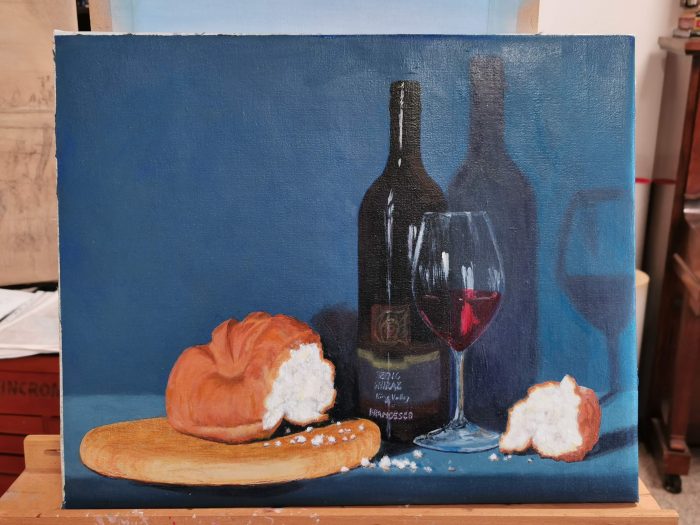
“It may be that artists whether they are musicians, composers, writers,
sculptors or painters, are all in a sense yearning for immortality.”
“As a dentist your life’s work is destined to be buried in the ground.
An artist, on the other hand, can leave his literary efforts or his/her song
recordings or sculpture or paintings to live on long after he or she has gone to the big studio in the sky.”
“Personally, I enjoy the challenge of problem solving which any art work worth doing will throw at you. The more I learn about art the more
I come to realise how much I don’t know. This constitutes a great mental challenge and as Agatha Christie’s Hercule Poirot would say; ‘It keeps the little gray cells active’.”
“It is an exciting journey to be on. With guidance from a good tutor you can only progress provided you put the time and effort into it. It is like playing a sport or learning a musical instrument. You strive for excellence and you achieve it through practice.”
“I prefer painting still life subjects. I believe this is the most disciplined area of painting. You can’t cheat when you paint a bottle or a pot or a jar.
The errors will be glaringly obvious. I have painted landscapes and portraits but I enjoy the challenge of still life painting the most. Furthermore, the discipline required to paint good still life has a payoff when you attempt other subjects.”
“It is hard to pick a favourite artist. Generally I lean toward the Dutch Masters, because of their style of painting and their subject matter.
If I had to pick a favourite painting it would have to be “The Night Watch” by Rembrandt van Rijn.”
“His treatment of light and shade and the difficulties of painting a group portrait such as this is mind-bending in the problems that would present.
Of Australian Artists my pick would be Tom Roberts. His rendering of the opening of the First Australian Federal Parliament could well be the ultimate group portrait, but I like the smaller group portrait he did; ‘Coming South’”
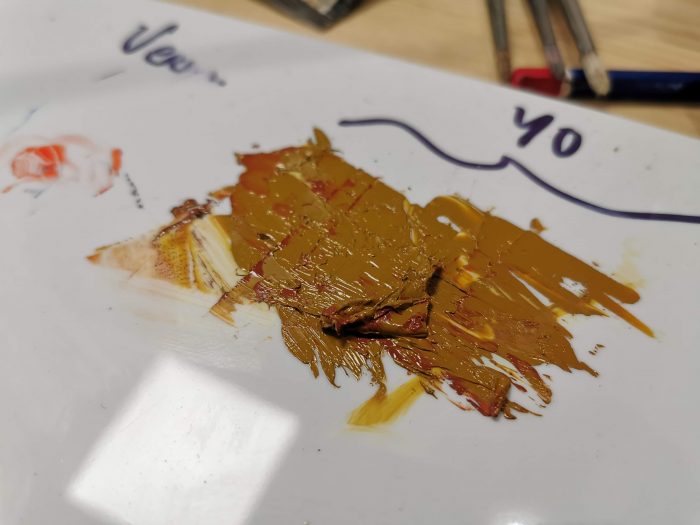
“My own favourite painting was a still life I did last year. It is probably not the best painting I have done, but I enjoyed the journey I made with it.
It contains mistakes which I would like to correct and I do intend to paint this subject again maybe in another years time when I have learned more and hopefully improved in my painting skills. It is a painting in what is called the sacramental genre, involving bread and wine. I might try a fishes and loaves example of this genre next. The painting is a favourite because it was something I had wanted to paint for a long time and I learned so much from painting it.”
“As I said earlier, fine traditional art is needed to reflect the health of our society. Suffice to say the standard of what passes for ‘good art’ today has slipped badly. This reflects the state of our culture and the society we find ourselves living in. There is the age old question; does art reflect life or does life reflect art. To the extent that life reflects art then traditional fine art is vital to the survival of our culture and society.”
“We must keep the tradition of fine responsive realist art alive if we as a society are to survive let alone progress. I see it as a duty even!”
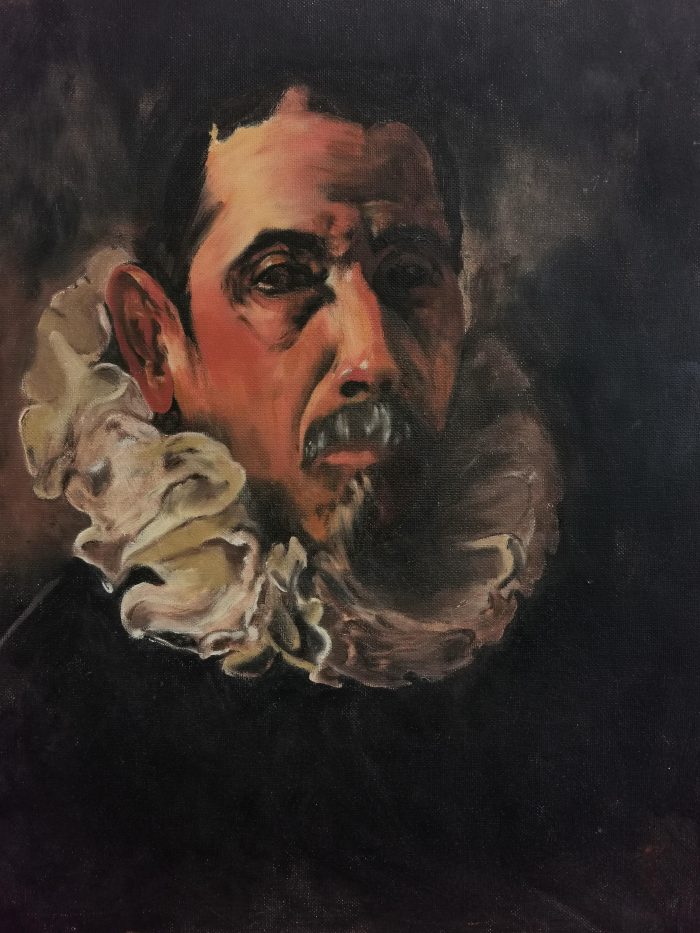
“For anyone aspring to learn to paint realistically, I say this. Give it a crack!
Go for it! You may surprise yourself. Find a good tutor to guide you and remember the results or your achievements are directly proportional to the effort and practice you put in.”
“Pursuing excellence in creating fine art is guaranteed to teach you humility. Practising art is really about the journey not the destination.”
“Art, whether it be the performing arts, literary art, music or the visual arts are all part of the creative pulse of the culture we live in. The Sydney Opera House is a good example of art driving science, engineering and innovation.
It is only natural since artists are by definition creative people no matter what medium they work in.”
“Visual artists have an affinity with those who pursue the literary arts,
particularly poetry. Poets have inspired painters in their work and vice versa. I could say a great deal more in an answer to this question.”

We thank Jim for his insightful words and for his time. In the future we hope to delve more into the importance of fine art in our world.



